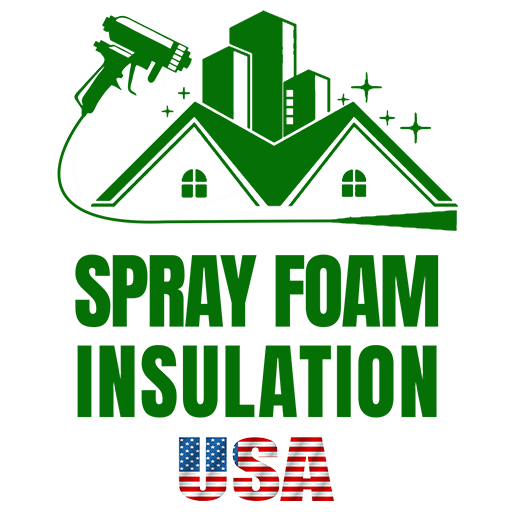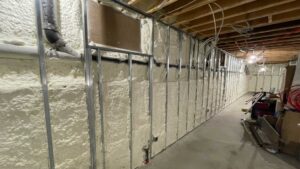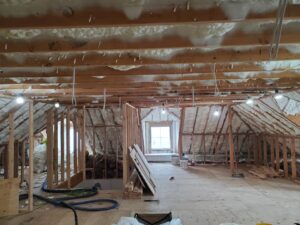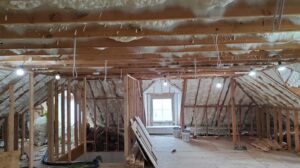Quick Guide to Building Insulation Solutions
- Energy Efficiency: Insulation dramatically reduces energy use, slashing costs.
- Comfort: Proper insulation maintains stable temperatures for year-round comfort.
- Climate Change: Effective insulation lowers CO2 emissions, benefiting the planet.
In the battle against climate change, building insulation emerges as a hero, not only combatting high energy costs but also enhancing indoor comfort and taking a stand for the planet. A well-insulated building is akin to wrapping your space in a protective layer that efficiently keeps the cold out during winter and the heat at bay during summer. This simple yet effective solution ensures that your heating and cooling systems work less, saving you money and reducing your carbon footprint.
For homeowners and business owners in NY and NJ, understanding and choosing the right insulation can be a game-changer. Whether you’re building new or retrofitting, the goal is clear: maximize energy efficiency, increase comfort, and contribute to a healthier planet.
With this guide, we dive into building insulation solutions, offering a roadmap to making informed decisions that align with your values of quality, expertise, and sustainability. Embrace the journey towards a more energy-efficient and comfortable living or working space.

Types of Building Insulation
When it comes to building insulation solutions, understanding the various types available is crucial for making an informed decision. Each type of insulation has its unique characteristics, advantages, and best use cases. Let’s dive into the main types: Fiberglass, Mineral Wool, Spray Foam, Rigid Foam, and Reflective Systems.
Fiberglass
Fiberglass insulation is made from fine glass fibers and is one of the most common types of insulation found in homes and buildings. It’s usually available in batts and rolls, which makes it easy to install between studs, joists, and beams.
- Advantages: It’s cost-effective and has a high R-value per inch, making it a popular choice for many homeowners. Fiberglass is also non-flammable and resistant to moisture damage.
- Best Use: Ideal for attics, walls, and floors in residential and commercial buildings.
Mineral Wool
Mineral Wool can refer to rock wool or slag wool and is known for its excellent fire resistance and soundproofing capabilities.
- Advantages: Besides being fire-resistant, mineral wool has a higher density compared to fiberglass, offering better insulation per inch and sound dampening.
- Best Use: Great for areas requiring fire resistance and noise reduction, such as internal walls and ceilings.
Spray Foam
Spray Foam insulation is a liquid foam that is sprayed into place and expands to fill cavities. It comes in two main types: open-cell and closed-cell, with closed-cell providing a higher R-value.
- Advantages: It creates an airtight seal, significantly reducing energy loss. Spray foam also blocks moisture and can strengthen the structure of your building.
- Best Use: Perfect for sealing gaps, cracks, attics, and rim joists, as well as overall wall insulation.
Rigid Foam
Rigid Foam or foam board insulation provides high insulation value for relatively little thickness. It’s made from polystyrene, polyisocyanurate, or polyurethane.
- Advantages: Rigid foam is easy to cut and fit into various spaces, making it versatile for different applications. It’s excellent for reducing thermal bridging through wood studs, providing continuous insulation over walls and roofs.
- Best Use: Suitable for basement walls, exterior walls under siding, and as sheathing on new constructions.
Reflective Systems
Reflective insulation systems are made from aluminum foils with a variety of backings, such as kraft paper, plastic film, polyethylene bubbles, or cardboard.
- Advantages: These systems reflect radiant heat away from the living space, making them effective in hot climates. They’re lightweight and easy to install.
- Best Use: Best used in attics to reduce heat gains from the roof in hot climates.
Choosing the Right Insulation
Selecting the right type of insulation for your building involves considering your specific needs, such as climate, building design, and budget. For instance, spray foam might be the best choice for creating an airtight building envelope, while fiberglass might be more suitable for a budget-friendly attic renovation.
Understanding the properties and benefits of each insulation type will help you enhance your building’s energy efficiency and comfort. The goal is not just to insulate but to do so in a way that meets your specific needs and contributes to a more sustainable future.
Keep these options in mind and consider how they align with your project’s requirements and goals. The right insulation can make a significant difference in your building’s performance and your overall comfort.
In the next section, we’ll explore cost-effective insulation solutions that can provide significant savings without compromising on quality or performance.
Cost-Effective Insulation Solutions
When it comes to building insulation, we all want the best bang for our buck. Let’s dive into some options that won’t break the bank but will keep your space cozy and your energy bills low.
Expanded Polystyrene (EPS)
EPS is like the superhero of budget-friendly insulation. It’s light, easy to work with, and has a decent R-value, which means it does a good job keeping heat where you want it. Because it’s so affordable, EPS is a great choice if you’re watching your wallet.
Fiberglass Batts
Think of fiberglass batts as the old reliable of insulation. They’re everywhere, and for a good reason. They’re cost-effective and pretty straightforward to install yourself. If you’re up for a DIY project, fiberglass batts can save you even more money.
Cellulose
If you’re into green living, cellulose is your friend. It’s made from recycled paper, and it’s super effective at keeping your home warm or cool. Plus, it’s treated to be fire-resistant. With cellulose, you’re not just saving money; you’re also doing the planet a favor.
Radiant Barrier
Here’s something a bit different. Radiant barriers work by reflecting heat, making them perfect for hot climates. If your main concern is keeping your house cool in the summer, a radiant barrier in your attic can reduce cooling costs. It’s like putting sunglasses on your house!
Why These Solutions Rock:
- Budget-Friendly: They don’t cost a lot to buy or install.
- DIY-Friendly: Except for radiant barriers, most can be a weekend project.
- Eco-Friendly: Especially cellulose, which is recycled.
Real Talk: No matter which insulation you choose, the key is to seal up leaks around your house first. Think of it like putting on a sweater but leaving the zipper open. Make sure those cracks and gaps are filled to get the most out of your insulation.
Next up, we’ll tackle the best insulation options for different parts of your building. Whether you’re focusing on the attic, walls, or floors, we’ve got you covered with top recommendations that’ll keep your space comfortable year-round.
Best Insulation for Different Parts of a Building
Attics and Roofs
In attics and roofs, Spray Foam insulation shines. It creates an airtight seal that blocks all drafts. Plus, it’s great for reaching those hard-to-get spots. Fiberglass is another good option for attics, especially if you’re looking for a more budget-friendly solution. It’s easy to install between the rafters. Lastly, Radiant Barriers are perfect for hot climates. They reflect the sun’s heat, keeping your attic cooler.
Walls
When it comes to walls, Spray Foam insulation is a top performer. It not only insulates but also adds to the structural integrity of the building. For a DIY-friendly option, Fiberglass Batts are the way to go. They easily fit between wall studs and are cost-effective. Rigid Foam boards are another excellent choice for walls, providing high insulation values with minimal thickness.
Floors and Foundations
EPS (Expanded Polystyrene) is a fantastic choice for insulating floors and foundations. It’s lightweight, easy to cut, and resistant to moisture—making it ideal for below-grade applications. Spray Foam can be used here too, especially for sealing gaps and creating a moisture barrier. Rigid Foam boards, with their high R-values, are also suitable for floors and foundations, offering durable and effective insulation.
Pipes and Ductwork
For pipes and ductwork, Mineral Wool is a standout. It’s naturally fire-resistant and excellent for soundproofing. Foam Board insulation can be cut to fit around ductwork and pipes, providing a snug fit that keeps heat in and cold out.
By selecting the right insulation for each part of your building, you can enhance energy efficiency, reduce utility costs, and increase comfort. Whether you opt for Spray Foam’s airtight seal, Fiberglass’s affordability, or the reflective properties of Radiant Barriers, each solution offers unique benefits tailored to different needs. The key to maximizing your insulation’s effectiveness is proper installation, so consider professional help for the best results.
Insulation and Environmental Impact
When we talk about building insulation solutions, it’s not just about keeping our homes cozy. It’s also a big step towards helping our planet. Let’s dive into how insulation, especially products like bio-based spray foam, plays a role in this.
Recycled Materials
Many insulation materials are now made from recycled content. This means less waste in our landfills and more efficient use of resources. By choosing insulation made from recycled materials, you’re not just insulating your building; you’re also contributing to a circular economy.
Bio-based Spray Foam
Bio-based spray foam, like the SucraSeal mentioned earlier, is a game-changer. It’s made from renewable resources, which reduces the reliance on fossil fuels. Plus, it’s got the highest bio-content in the industry. This kind of innovation shows that we can achieve excellent insulation performance without compromising on environmental values.
Energy Savings
Here’s a fact that’s hard to ignore: proper insulation can significantly reduce the energy needed for heating and cooling. This means lower utility bills for you and less strain on our power grids. Over time, the energy savings from well-insulated buildings can add up to a substantial amount, making a big difference in our overall energy consumption.
CO2 Emissions Reduction
Buildings are a major source of CO2 emissions, mainly due to heating and cooling needs. By improving insulation, we can reduce these emissions dramatically. For instance, the SES Spray Foam SucraSeal can reduce air conditioning requirements by almost 50%, which translates into a significant reduction in CO2 emissions. This is a clear win for the environment.
The Big Picture
Choosing the right insulation isn’t just a personal or financial decision; it’s also an environmental one. With options like recycled materials and bio-based spray foam, we have the power to make a positive impact. These choices lead to energy savings and CO2 emissions reduction, helping us fight climate change from the comfort of our homes and offices.
As we move towards the conclusion, remember: every choice we make in our buildings, from the materials we use to the energy we consume, plays a part in the larger story of our planet’s health. Sustainable insulation solutions not only offer immediate benefits in terms of energy savings but also contribute to a greener, more sustainable world.
Next, we’ll answer some frequently asked questions about building insulation, helping you make informed decisions for your space.
Frequently Asked Questions about Building Insulation
What is the R-value and why is it important?
R-value measures how well insulation can stop heat from entering or leaving your home. Think of it like a superhero’s shield against temperature changes. The higher the R-value, the stronger the shield. This is crucial because it helps keep your home warm in winter and cool in summer without overworking your heating or cooling systems. This means more comfort and less money spent on energy bills.
How can insulation contribute to a building’s overall energy efficiency?
Insulation acts like a thermal blanket for your building. By slowing down the unwanted flow of heat, it makes your heating or cooling system’s job easier. This not only saves energy but also reduces your carbon footprint. Proper insulation in the attic, walls, and floors ensures that your building maintains a consistent temperature, leading to significant energy savings. In fact, adding insulation to your attic alone can cut heating and cooling costs by up to 15%.
What are the most eco-friendly insulation materials?
In our journey towards sustainability, choosing eco-friendly insulation materials has become a priority. Here are some of the greenest options:
- Wool: Sheep’s wool is a natural, renewable resource that can be reused and biodegrades at the end of its life.
- Cotton: Recycled cotton, often from denim, offers a green solution without compromising performance.
- Cellulose: Made from recycled paper, cellulose is treated to be fire-resistant and is an excellent choice for reducing waste and utilizing sustainable materials.
- Spray Foam: Some spray foams, like those offered by Spray Foam Insulation USA, are bio-based, reducing reliance on fossil fuels and improving a building’s energy efficiency.
Each of these materials not only helps insulate your home but also minimizes environmental impact, making them excellent choices for those looking to green their space.
As we continue exploring ways to enhance our buildings’ energy efficiency and comfort, understanding the role of insulation is key. With the right information and materials, we can all contribute to a more sustainable and comfortable living environment.
Conclusion
In wrapping up our exploration of building insulation solutions, it’s clear that the journey towards a more energy-efficient and comfortable living or working space is both a necessary and rewarding one. The importance of selecting the right insulation cannot be overstated, especially in an era where sustainability and energy savings are not just desired but required for the well-being of our planet.
Sustainable Solutions are at the forefront of this journey. By choosing materials that not only insulate but do so with minimal environmental impact, we contribute to a larger, global effort to combat climate change. Materials like bio-based spray foam offer a promising path forward, combining superior insulation properties with a reduced carbon footprint.
Energy Savings are perhaps the most immediate benefit of proper insulation. By creating a seal against air leaks and maintaining a consistent internal temperature, we significantly reduce the need for heating in the winter and cooling in the summer. This not only lowers utility bills but also extends the lifespan of HVAC systems, making it a win-win situation. The savings realized go beyond just monetary value, contributing to a reduction in overall energy consumption and, consequently, fewer greenhouse gas emissions.
At Spray Foam Insulation USA, we pride ourselves on offering top-notch insulation solutions that meet the needs of today’s environmentally conscious consumer. Our dedication to providing high-quality, eco-friendly options aligns with the global mission to ensure a sustainable future for all. By choosing us, you’re not just insulating your space; you’re becoming part of a larger movement towards environmental responsibility and energy efficiency.
Let’s remember, each step we take towards better insulation is a step towards a healthier planet. By opting for sustainable thermal insulation solutions, we’re not just enhancing the comfort and efficiency of our buildings; we’re contributing to a global effort to protect our environment for future generations.
Ready to take the next step towards a more sustainable and energy-efficient home? Discover the advantages of choosing Spray Foam Insulation USA for your insulation needs. Together, we can make a difference. Let’s build a greener, more sustainable world, one insulated space at a time.





